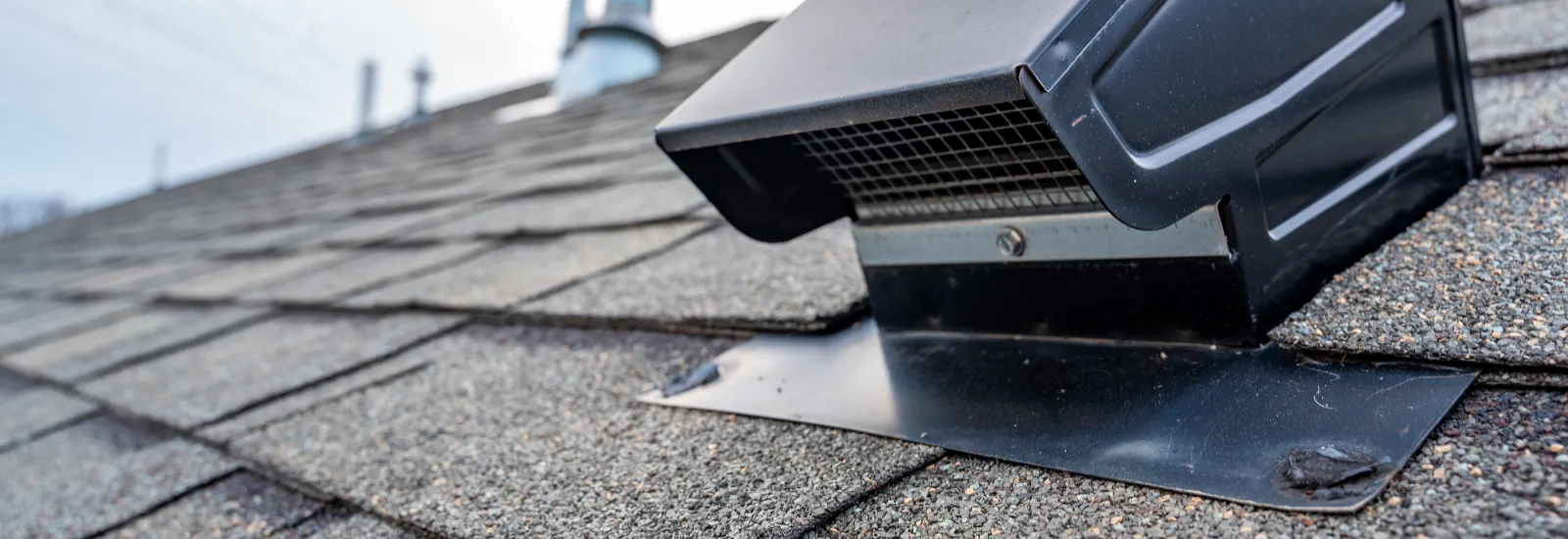While some homeowners may worry that roof and attic ventilation will negatively impact their home's insulation, the reality is that proper ventilation is very important to the health of your roof, your attic, and the rest of your home.
In fact, ventilation can actually help lower your cooling costs in the summer months by providing an outlet for hot air to escape. Heat rises in a home and collects in attic spaces, and the roof itself can be a source of heat generation as the warm sun hits dark shingles and radiates the attic space down below.
At the same time, these vents help prevent the buildup of moisture underneath your roof, especially in cooler weather when moisture is more likely to condense in this space. When a home's roof ventilation isn't installed or working properly, it can lead to some serious problems that could affect your comfort in your home and even be a source of damage to your roof and other interior structures.
Read on to learn more about the importance of proper roof vents, as well as how to avoid problems resulting from poor ventilation.
Common Types of Roof Vents
The roof ventilation options for your home will depend on the design of your roof, including whether or not you have eaves or other structures that can be used to facilitate airflow. Whether you're maintaining existing vents or looking to install new ones, here are the common roof vents you might find:
- Ridge vents. Ridge vents are the most common type of ventilation system installed in most modern homes. The benefits of this option are that ridge vent installation is much easier than other types of vents, and they offer simple and effective functionality, especially when facilitating heat release from the attic. A ridge cap vent is also more aesthetically pleasing on most homes since they are capped with a shingle that helps them blend in.
- Hip vents While hip vents are similar in design to ridge vents, they're an alternative for roofs that don't feature a ridge area. In some cases, hip vents may be used in conjunction with ridge vents to facilitate better air circulation through an attic space.
- Roof louvers. Roof louvers are more pronounced when rising from the roof, which makes them more visible from street level, but they're another great ventilation option for roofs that have limited ridge ventilation options. Louvers may also require more vent installs than other types of vents, but they can be an effective way to provide proper ventilation when certain structural challenges exist.
- Mechanical vents. Turbines set up on top of a roof vent are designed to turn in the wind, spinning and pulling air out of the attic to manually force ventilation. While these are more visible than other roof vent options, they're also a more powerful roof exhaust vent option and may be preferable for homeowners who want better ventilation for their attic.
- Powered exhaust vents. In rare cases, mechanical vents and other roof vent options may not be sufficient to ventilate the air underneath a roof. Powered exhaust vents connect to solar panels or your home's power source to exhaust the attic through an electric-powered vent. This is the most expensive vent option, but also the most powerful.
What's the Ideal Amount of House Roof Vents?
As a rough estimate for roof ventilation, experts recommend installing about one square foot of roof ventilation for every 300 feet of square footage in the attic.
Keep in mind, though, that this is just a starting point calculation, and may not be applicable to every situation. For example, the attic square footage is now always proportionate to the amount of cubic footage of air in the attic: A home with a low-pitch roof, for example, will have a smaller attic interior, and thus fewer ventilation needs, than an attic with the same square footage but a higher roof pitch. Environmental factors, such as high seasonal humidity, may also factor into this calculation, and local building codes may set rules about the minimum ventilation required on a roof. Consult with a roofing expert to make sure your ventilation is sufficient for your home's needs.
How to Avoid Issues With Roof Vent Installation
When it comes to roof ventilation issues, prevention is always easier than repairing the damage. Here are simple ways you can reduce the risk of any ventilation issues:
- Clean debris from your roof. Leaves, branches, and other debris—particularly during the fall—can clog roof vents and obstruct airflow.
- Check each attic vent cover to make sure they don't become clogged. In addition to debris clogging the outside of a vent, the vent cover in the attic can become clogged with dust and other debris. A routine check in your attic will help you confirm that these vents are still allowing airflow.
- Make sure your roof is professionally sealed. If you're installing a new roof, a professional seal offers many benefits to the health and longevity of the roof itself, as well as the effectiveness of your ventilation. Sealing will ensure that airflow functions properly within your attic space, supporting the ventilation system and maximizing airflow.
If you need to install ventilation in your roof, or you're worried that poor ventilation is causing hidden damage to your roof and attic, contact a roofing expert as soon as possible to address these issues and prevent additional problems from developing in the future.
